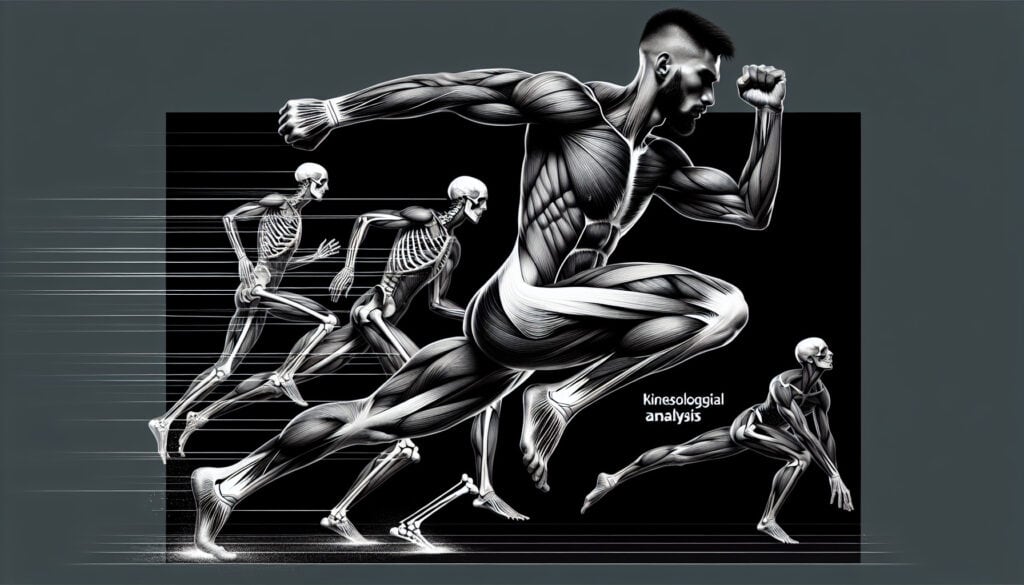Analizar el movimiento humano y sus mecanismos subyacentes.
- Metodologías: Clientes y marketing, Economía
Análisis kinesiológico

Análisis kinesiológico
- Mejora continua, Diseño para la fabricación (DfM), Diseño para la sostenibilidad, Eficiencia, Ergonomía, Human Factors, Ingeniería de factores humanos (HFE), Cinemática, Seguridad
Objetivo:
Cómo se utiliza:
- The study of human movement from a mechanical and anatomical perspective. It is used in ergonomics and sports science to analyze the forces on the body during movement and to design safer and more effective ways of performing tasks.
Ventajas
- Can help to improve the safety and efficiency of human movement; Can be used to design better products and workplaces.
Contras
- Can be complex and require specialized equipment and expertise; May not be a complete picture of the user experience.
Categorías:
- Ergonomía
Ideal para:
- Analyzing the movement of a worker to design a safer and more efficient estación de trabajo.
Kinesiological Analysis serves several purposes across various sectors, particularly in workplaces where safety and efficiency are priorities. In manufacturing and assembly lines, this methodology is utilized to examine the physical demands placed on workers during repetitive tasks, helping identify movements that may lead to injuries or fatigue, thereby informing the design of equipment or layout improvements. In the healthcare industry, therapists apply kinesiological principles to develop rehabilitation protocols that facilitate optimal movement and recovery, ensuring patient safety and effectiveness in regaining mobility. In sports science, coaches and trainers analyze athletes to enhance performance while minimizing injury risks, utilizing data from kinesiological studies to refine training techniques and equipment. The methodology is best initiated by multidisciplinary teams including ergonomists, design engineers, health professionals, and end-users or workers, fostering collaboration that enriches the analysis with diverse expertise. Kinesiological Analysis is particularly applicable during the product development phase, where early consideration of human factors can lead to innovations that promote comfort and safety. Its application in health and safety regulations means it supports compliance efforts as well, benefiting organizations by aiding them in adhering to industry standards while enhancing worker satisfaction and productivity.
Pasos clave de esta metodología
- Identify the specific movement or task to be analyzed.
- Break down the movement into distinct phases to understand the mechanics involved.
- Analyze the anatomical structures and their functions during each phase of the movement.
- Evaluate the forces acting on the body, including gravity, friction, and muscular forces.
- Determine the range of motion and joint angles relevant to the task.
- Assess the postures adopted during the movement and potential deviations from ideal ergonomics.
- Identify any risk factors for injury associated with the analyzed movement.
- Develop recommendations for improving movement efficiency and safety.
- Test proposed interventions or design modifications and analyze their impact.
Consejos profesionales
- Utilize motion capture technology to quantitatively assess biomechanics, enabling precise identification of inefficiencies and ergonomics in workplace tasks.
- Conduct detailed force and pressure mapping on tools and surfaces to determine optimal dimensions and materials, reducing strain on workers during repetitive tasks.
- Integrate kinesiological principles into the design process via iterative prototyping and user testing, ensuring that workstations evolve based on real movement data and user feedback.
Leer y comparar varias metodologías, recomendamos el
> Amplio repositorio de metodologías <
junto con otras más de 400 metodologías.
Sus comentarios sobre esta metodología o información adicional son bienvenidos en la dirección sección de comentarios ↓ , así como cualquier idea o enlace relacionado con la ingeniería.
Contexto histórico
1687
1687
1750
1788
1800
1800
1800
1678
1687
1738
1757
1788
1800
1800
1800
(si se desconoce la fecha o no es relevante, por ejemplo "mecánica de fluidos", se ofrece una estimación redondeada de su notable aparición)















Publicaciones relacionadas
Cuestionarios sobre molestias musculoesqueléticas
Pruebas multivariantes (MVT)
Análisis de regresión múltiple
Sistemas de captura de movimiento
Método MoSCoW
Prueba de la mediana de Mood